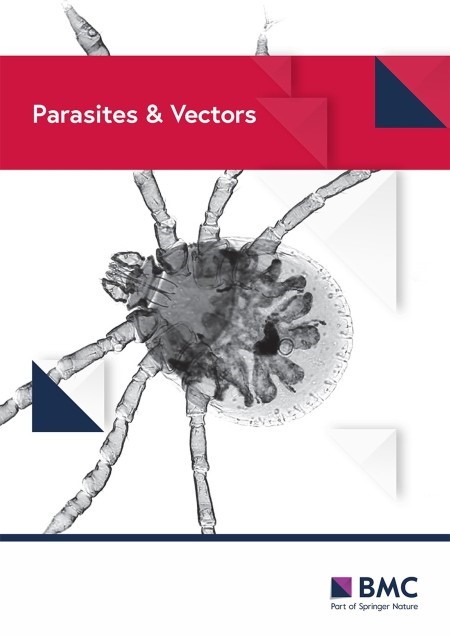Molecular characterization and functional implications on mouse peripheral blood mononuclear cells of annexin proteins from Echinococcus granulosus sensu lato
Xue He, Guoqing Shao, Xiaodi Du, Ruiqi Hua, Hongyu Song, Yanxin Chen, Xiaowei Zhu and Guangyou Yang

Abstract
Background: Cystic echinococcosis (CE) is a life-threatening zoonotic disease caused by the larval stage of Echinococcus granulosus sensu lato, which employs various strategies to evade the host immune system for survival. Recent advances have revealed the role of annexins as excretory/secretory products, providing new insights into the immune regulation by these proteins in the pathogenesis of CE.
Methods: Echinococcus granulosus annexin B proteins EgANXB2, EgANXB18, EgANXB20, and EgANXB23 were cloned, expressed, and analyzed using bioinformatic tools. Membrane binding analysis was used to assess their bioactivity, while their immunoreactivity and tissue distribution characteristics were determined experimentally using western blotting and immunofluorescence staining, respectively. Furthermore, quantitative real-time reverse transcription PCR (qRT-PCR) was used to analyze the mRNA expression profiles of EgANXBs in different developmental stages of E. granulosus. Finally, immunofluorescence staining, cell counting kit 8 assays, flow cytometry, transwell migration assays, and qRT-PCR were used to evaluate the functional effects of rEgANXB18 and rEgANXB20 on mouse peripheral blood mononuclear cells (PBMCs).
Results: In this study, we identified four EgANXBs with conserved protein structures and calcium-dependent phospholipid binding activities. rEgANXBs were recognized by serum from sheep infected with E. granulosus and distributed in the germinal layer of fertile cysts. Interestingly, transcription levels of the four EgANXBs were significantly higher in protoscoleces than in 28-day strobilated worms. Moreover, we demonstrated that rEgANXB18 and rEgANXB20 were secretory proteins that could bind to PBMCs and regulate their function. Specifically, rEgANXB18 inhibited cell proliferation and migration while promoting cell apoptosis, NO production, and cytokine profile shifting. In contrast, rEgANXB20 showed limited effects on apoptosis but inhibited NO production.
Conclusions: Our findings suggested that among the four identified EgANXBs, EgANXB2 and EgANXB23 might play a pivotal role for the development of protoscoleces, while EgANXB18 and EgANXB20, as secretory proteins, appeared to participate in the host-parasite interaction by regulating the function of immune cells.
Keywords: Annexins; Echinococcosis; Echinococcus granulosus; Immunity; Leukocytes; Mononuclear.
Citation: He X, Shao G, Du X, Hua R, Song H, Chen Y, Zhu X, Yang G. Molecular characterization and functional implications on mouse peripheral blood mononuclear cells of annexin proteins from Echinococcus granulosus sensu lato. Parasit Vectors. 2023 Oct 6;16(1):350. doi: 10.1186/s13071-023-05967-y. PMID: 37803469; PMCID: PMC10559496.
Read full text:https://parasitesandvectors.biomedcentral.com/articles/10.1186/s13071-023-05967-y